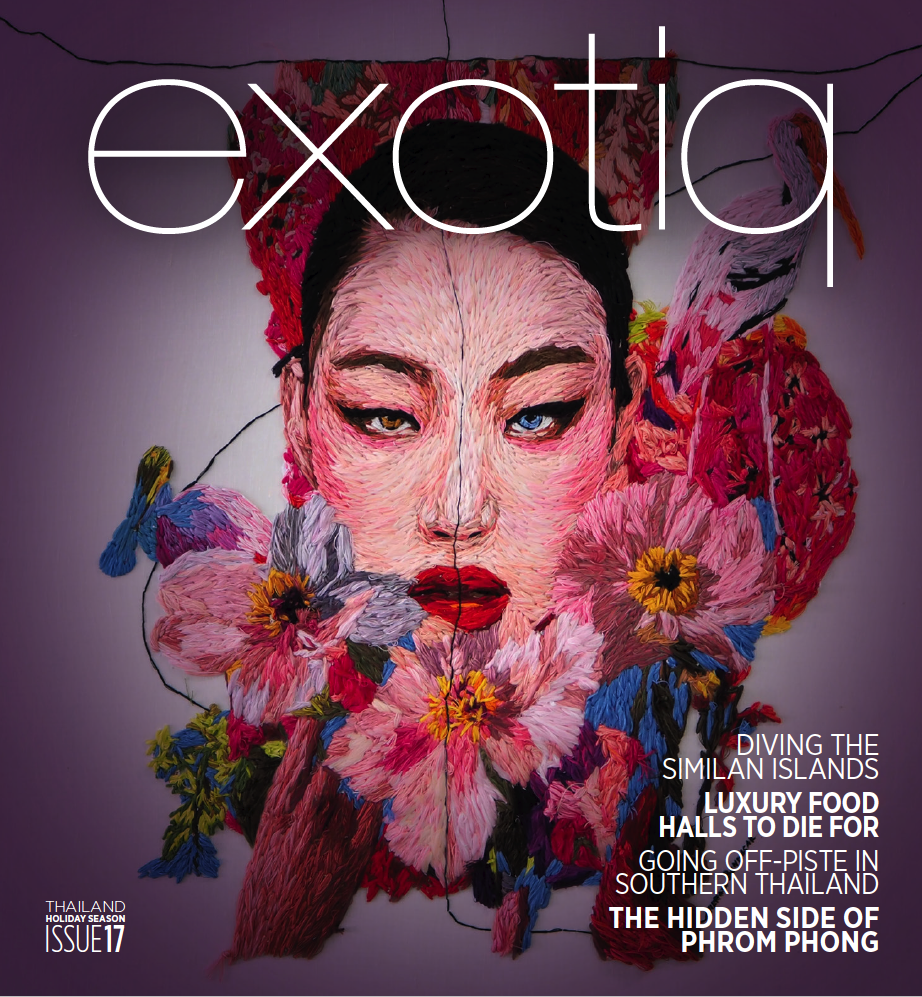- Bangkok
- Central Thailand
- Eastern Thailand
- Northeast Thailand
- Northern Thailand
- Southern Thailand
- Southern Thailand - Chumphon
- Southern Thailand - Krabi
- Southern Thailand - Phang Nga
- Southern Thailand - Phuket
- Central Island - Phuket
- Central West Coast - Phuket
- Bang Tao Beach - Phuket (Central West Coast)
- Emerald Bay - Phuket (Central West Coast)
- Kalim Beach - Phuket (Central West Coast)
- Kamala Beach - Phuket (Central West Coast)
- Laguna - Phuket (Central West Coast)
- Layan Beach - Phuket (Central West Coast)
- Patong Beach - Phuket (Central West Coast)
- Surin Beach - Phuket (Central West Coast)
- East Coast - Phuket
- North West Coast - Phuket
- Small Islands - Phuket
- South West Coast - Phuket
- Southern Coast - Phuket
- Southern Thailand - Satun
- Southern Thailand - Songkhla
- Southern Thailand - Surat Thani
A Traditional Sheen on History
The ancient craft of fashioning elegant lacquerware to beautify everyday objects lives on in Chiang Mai
By Louisa Spence
Contact
May 9, 2018
With the origins of lacquerware almost completely obscured by the mists of time, it’s especially fortunate that so many examples of this beautiful craft can still be seen, bought and treasured in Thailand.
Lacquerware is known as Kreung Kern in Thai, and here it’s generally understood to refer to containers made by the traditional process still practiced in Chiang Mai in wood, bamboo or clay, to shape various forms of household utensils.
These shapes are then carefully varnished and inlaid using pigments, dyes, mother of pearl, gold leaf or silver leaf, and a lacquer juice called Yang Rak . This same process of traditional decoration is also applied to much larger articles, such as temple doors or thrones.
Thailand is by no means alone in preserving a lacquerware tradition, for the process is echoed in other countries of Asia where lacquer has its origins.
Lacquer is a product of Asia - in the tropics, lacquer juice from lacquer trees is plentiful but of inferior quality; while in the temperate regions it’s of finer quality, but there’s less of it.
Lacquer produced in countries in the same latitude as Japan, Korea and China is - if unadulterated - of almost the same quality, and in these countries finely lacquered articles both for practical use and as objects of art have also been made from ancient times.
As an aside, there’s also the modern more down-market connotation of lacquer, that denotes coloured or opaque varnishes applied to metal or wood to produce lustrous surfaces, usually sold in hardware stores in tin cans as a commercial product.
That’s all many centuries away from the traditional artistic lacquer work still practiced in Chiang Mai, and said to have its roots in ancient China.
This type of traditional lacquering refers to the resinous sap tapped from a lacquer tree; and the process of applying this sap as a decorative embellishment.
The Chinese are believed to have been the first to develop this type of lacquer work, more than 3,000 years ago.
At the beginning of the Ming Dynasty, lacquerware factories were recorded in Taleephoo Province, Yunan, and Tonking. Later on, this lacquer work extended into neighbouring countries of Korea, Japan, Vietnam - and Thailand.
Tri Amatayakul’s famous history of Thai Arts mentions that a method of applying gold leaf over black lacquer had been known here since the Sukhothai period, and lacquer work is understood to have become well-established during the Ayudhya period.
It’s also believed that the extension of lacquer work from China into Thailand originated from the southern part of China, with the art passed on from Yunan, Chiengrung and Chiengtung, to Chiang Mai.
In fact, the word Kreung Kern for Thai lacquerware is named after the tribe Thai Kern in Chiengtung.
Nowadays, this traditional lacquerware is still produced in a village called Barn Kern, at Tambol Hai Ya in Chiang Mai.
Here, skilled Barn Kern craftsmen create lacquerware either by engraving designs on the lacquered surface; or by drawing designs gilded with gold-leaf or silver-leaf and rinsed with water, after which the inlaid designs will appear. The former process is called Lai Kud and the latter Lai Rod Nam.
This beautifully realised art is now even applied to ultra-modern settings such as mobile phone cases - proving that genuine, heartfelt art never goes out of style.
For more contact: [email protected]
Important Information:







